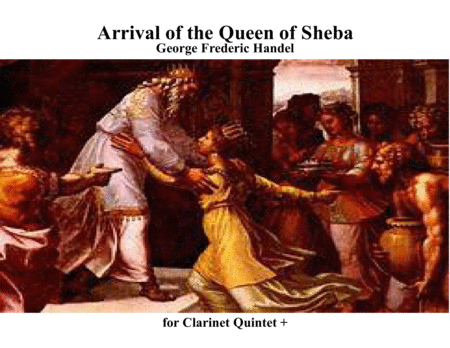Woodwind Ensemble Clarinet - Level 3 - Digital Download SKU: A0.746890 Composed by George Frideric Handel. Arranged by Keith Terrett. Baroque,World. 20 pages. Keith Terrett #4849009. Published by Keith Terrett (A0.746890). Handel's Arrival from the Queen of Sheba come from Solomon (HWV 67), an oratorio by George Frideric Handel; arranged for Clarinet Quintet, plus extra parts if you need them!The Arrival of the Queen of Sheba, sinfonia for two oboes and strings by George Frideric Handel that premiered in London on March 17, 1749, as the first scene of Act III in the oratorio Solomon. One of the last of Handelâs many oratorios, Solomon is rarely performed in its entirety, but Handelâs bright and lively The Arrival of the Queen of Sheba interlude is a widely appreciated processional set piece. It often was (and it continues to be) played during wedding ceremonies. A noted public performance of the piece occurred during the opening ceremonies of the London 2012 Olympic Games.Its libretto is based on the biblical stories of wise king Solomon and is attributed to Newburgh Hamilton. The music was composed between May 5 and June 13, 1748 and the first performance took place in London on March 17, 1749.For more of my original music, great arrangements and all the national anthems of the world, check out my on-line stores: https://www.scoreexchange.com/profiles/keithterrett1 http://www.sheetmusicplus.com/search?Ntt=keith+terrett Need an anthem fast? They are ALL in my store! All my anthem arrangements are also available for Orchestra, Recorders, Saxophones, Wind, Brass and Flexible band. If you need an anthem urgently for an instrumentation not in my store, let me know via e-mail, and I will arrange it for you FOC if possible! keithterrett@gmail.com If you perform this arrangement in public, make a recording or broadcast it through any media, please notify the PRS (UK), or ASCAP (USA), or SOCAN (Canada), or APRA (Australia) or KODA (Denmark) or the equivalent organisation in your own country, giving the name of the arranger as Keith Terrett.
